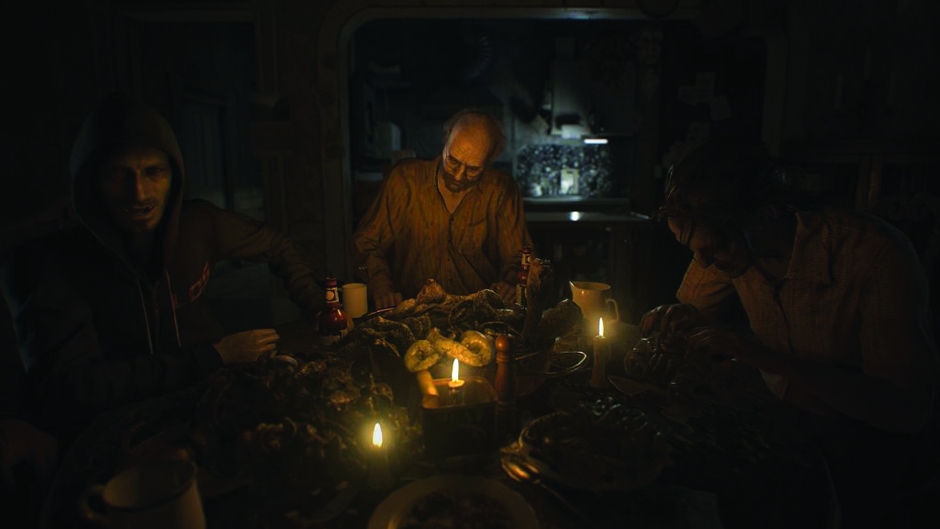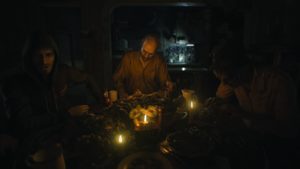

After the critical success of the “Revelations” mini-series, “7” continues the trend of “Resident Evil” games returning to the series’ roots. Most of the game takes place in one location, the Baker’s estate.
By Craig Taylor | Staff Writer
The “Resident Evil” series is widely regarded as the pinnacle of survival-horror. While not always frightening, “Resident Evil” games are about scavenging items, solving puzzles and trying to get by with careful resource management.
“Resident Evil 7: Biohazard” cranks up the horror in an entry that is just as much about surviving as it is about fueling nightmares. A homogeneous mix of multiple film and video game influences, including “Outlast,” “Saw” and “Texas Chainsaw Massacre,” “Resident Evil 7” is a masterpiece of both video games and the horror genre as a whole.
In “Resident Evil 7,” Ethan Winters is searching for his wife, Mia, who had been thought dead for three years. He receives an email from Mia asking him to come find her at the Baker estate in Dulvey, Louisiana. Shortly after arriving at the derelict mansion, Ethan is captured by the Baker family, the cannibalistic backwater hillbillies who are determined to make him part of their macabre family — or kill him trying.
The first few hours of “Resident Evil 7” are truly miserable (in an appropriate sort of way for a horror game). Ethan is completely powerless against the Baker family and must stumble around the estate looking for items to help him escape. All the while, the Bakers are calling out to him, taunting his desperate attempts to flee. These moments where you’re being hunted are absolutely terrifying as a player, and it makes the later points in the game that much more meaningful.
Once power is given to the player, that’s where “Resident Evil 7” begins to feel more like traditional survival-horror. Despite the game being in first-person, series veterans will feel right at home crafting first aid spray and rationing handgun ammo. It can be argued that this latter half loses some of the edge that makes the beginning of the game so scary, but that tonal shift feels earned after helplessly suffering through the horrors of the Baker estate.
Many of the terrifying encounters with the Bakers happen within close, intimate spaces. Consequently, “Resident Evil 7” is full of standout moments where Ethan is face-to-face with his tormentors. In one scenario, Ethan is trapped in a garage with one of the Bakers as they try to run him over with a car. In another, he faces off with a chainsaw-wielding Baker in a dissection room surrounded by hanging cadavers. While most of these moments are loaded towards the beginning of the game, they’re unforgettable set-pieces in a genre where every convention seems done to death.
Perhaps the most memorable character is the mansion itself. Thanks to the superb audio design, the quiet moments in-between the action are just as tense as the climactic boss encounters. The constant sound of fluttering window panels and creaky floorboards always keeps you on your toes, wondering if a Baker family member is creeping up behind you. The atmosphere of dread is palpable, which is something only the most well-crafted horror games are able to create.
If there is one thing that gets in the way of the seamless horror experience, it’s the difficulty of some of the puzzles. Although this may just be a personal problem, there were times where it took so long to figure out what to do that the illusion of horror began to fade. I started to see the Bakers as simple video game guards I had to evade rather than the terrifying monsters the story wanted them to be. Granted, this feeling subsided once I banged my head against the wall enough to figure the puzzles out, but it did create a crack in an otherwise flawless nightmare.
Instead of relying on cheap callbacks to the series’ past like many sequels, “Resident Evil 7” stands on its own. It takes the best of “Resident Evil,” blends it with contemporary horror and creates a phenomenal game that’s just as fun as it is scary. It’s still too early to tell what kind of legacy “Resident Evil 7” will leave, but I’ll bet in a few years it’ll be a given in the discussions of “greatest horror games of all time.”




